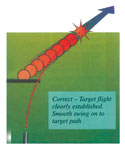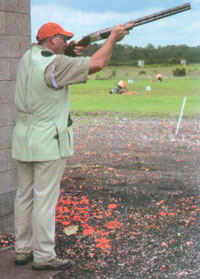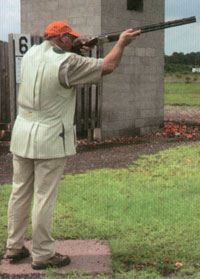
|
The
Gazette
Respecting Skeet • Wings of Feather or Clay |
Well, nothing is going to hone mental strength more than learning to “Shoot Straight” at Skeet. It takes complete and total concentration on each and every target, learning to visually acquire and maintain hard focus on every target, every time. This total concentration is the ultimate in mental strength training… learning to shut out distractions, unwanted thoughts, doubts and negativity. Once mastered, this mental strength readily transfers to the other shooting disciplines. For example, look at the success of former Skeet Champions when they moved to Sporting Clays: Martin Elsworthy, Mark Vessey, Barry Simpson, Andrew Harvison and, to close my argument, possibly the best shot in the world, George Digweed. At certain times of the year, the Sporting Clays course can be a wet and inhospitably muddy place, whereas the Skeet field is usually paved and dry. |
|
|
| Wings of Feather or Clay |
||
 There
is a great deal of discussion on the comparison of clay pigeon
targets (inanimate) and the real thing, live quarry (animate). There
is a great deal of discussion on the comparison of clay pigeon
targets (inanimate) and the real thing, live quarry (animate). The clay target is thrown at speeds between 60 and 90 miles per hour, but not having any means of propulsion (wings) the clay is quickly slowing - all clay targets actually fly falling, in parabolic arcs. The following figures are taken from the Flight speed of Game birds in MPH as listed in the 1998 Edition of Black’s Wing and Clay, page 68. These calculations do not allow for tail or side winds, both of which can increase speed and leeward drift or curls. Plus, the incredible gift of flight allows the bird to change speed, course or direction during every nano-second of flight. |
This ability to accelerate, decelerate, flair and jink is Nature’s built-in survival tool. Canvasback......................
85 mph |
Because
of these differences in speed and flight, many question the benefits
of practice shooting at the bird’s inanimate cousin, the
clay target. However, the basics of shooting a moving target are
the same. All targets require that the shoulders match the flight
line and that the muzzles mirror the target speed.

If these skills are polished and grooved in practice on the “inanimate cousin” clay targets during the Summer months, that time spent practicing will reap rich rewards in the field in the Fall. |

